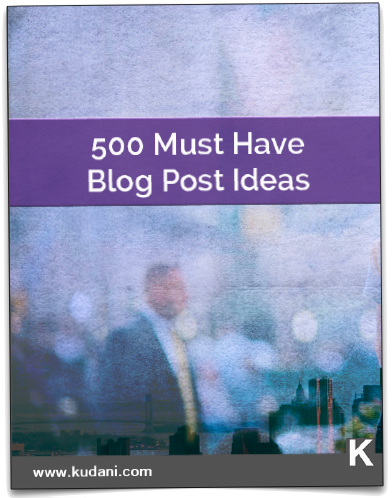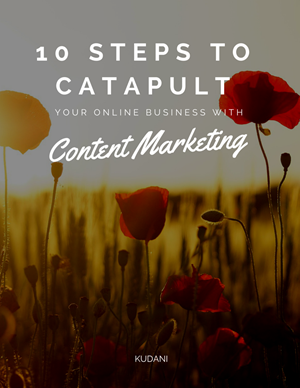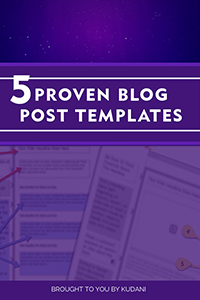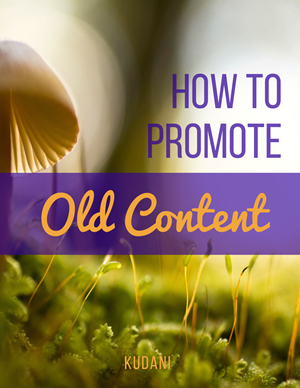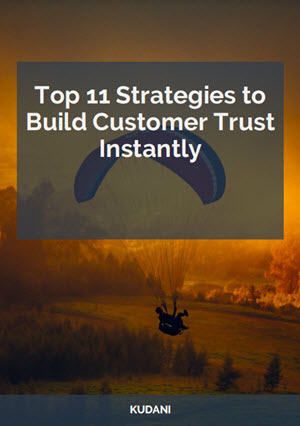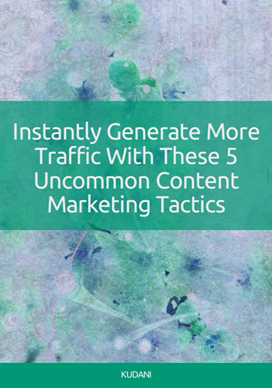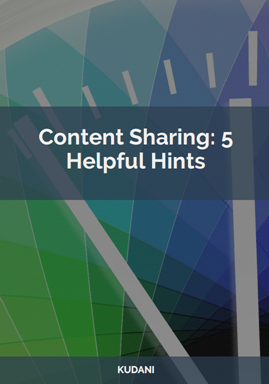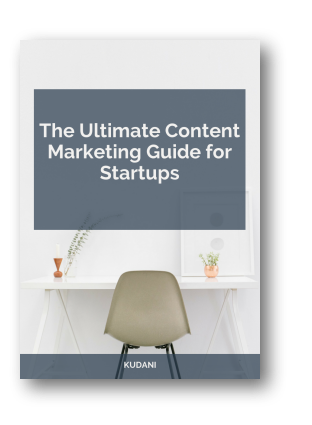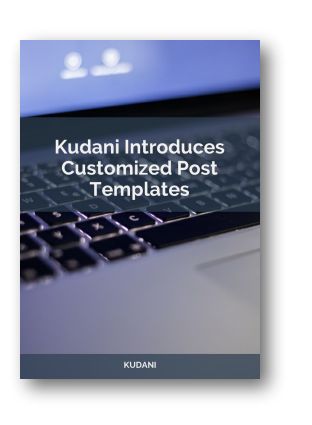Content Marketing Trends for 2016

Have you started planning for 2016?
Knowing the up and coming trends can help you stay ahead of the curve and one step ahead of your competitors.
As content marketing is evolving and changing it’s important to understand the trends and how to incorporate them into your overall strategy.
Niall O’Loughlin says that, “despite the changes, content marketing has remained relatively straightforward but that is set to change with the advent of new technologies; this means things are going to get a bit more complicated going forward.”
This article highlights the top ten trends that you should be planning for.
Top 10 Trends to Lookout For
1. The Rise of Journalistic Algorithms

Journalistic algorithms are now so advanced that they can create articles by themselves. As things stand, it still isn’t possible for these algorithms to write on detailed topics due to the complex grammatical rules of language but that may ultimately change. Indeed, you may have already come across an article written by a journalistic algorithm and not even realised it!
Niall O’Loughlin say that, “this may be desperately bad news for UK freelancers as their livelihood could be threatened by this particular advance. The threat may not become real for a few years yet however as it is still far more cost effective for small and medium-sized enterprises (SMEs) to have content written by a human. After all, journalistic algorithms are not yet capable of creating the kind of content a small business needs to get customers. That may change in a few years however.”
2. Shift Toward Long Form Content.
A recent article in Forbes stated that, “although Google’s Knowledge Graph has been around since 2012, it’s only recently that the vault has evolved into something truly impressive. It now appears for the vast majority of long-tail search queries, providing users with instant answers and information to common questions. Digital assistants like Siri and Cortana are attempting something similar. This sophisticated form of answer provision is removing the need to click any websites in the search results, reducing traffic to the traditional web pages that used to be their destination. In short, traffic to web pages that provide quick answers is starting to diminish, which will force content marketers to seek refuge in more complicated and more difficult topics.”
With long form content users with be able to find the answers to their queries much faster. This will decrease surfing time and hopefully increase time on websites that offer more content. Two thousand plus words appear to rank better and seem to be the future of blog writing.
3. SEO Budgets Will Center on Creating Valuable Content
John Hall reports that “Google is increasingly rewarding content creators who understand the meaning of valuable content. Long-tail searches have the potential to result in more high-quality traffic and sales for companies down the road. In fact, a recent article from Moz states that one of the company’s clients has seen a 135% increase in the number of pages gaining traffic via search, with an accompanying 98% increase in overall organic traffic.”
Gone are the days when companies paid for links. Now, your budget needs to shift toward creating meaningful content for the reader and away from stale link-building strategies.
4. Content Marketers Will Be in High Demand
Did you know that content marketing is now the second largest component of digital marketing budgets? Content creation and management are just behind mobile marketing (including mobile-optimization of websites) as the biggest expenditures for enterprises and SMBs. This means that competition is currently really fierce for talented content marketers with a proven track record.
Jasmine Henry says that this competition is only going to get worse, especially for individuals who drive really exceptional results or have niche specialties.
She continues that the following competencies could quickly become some of the most sought-after by content marketing teams and departments at organizations:
- Workflow content specialists
- Visual email marketing experts
- Sales/case study experts
- Data-driven content creators
“There probably won’t ever be a shortage of entry-level content creators. However, individuals with skill sets at the intersection of creativity and technology will reach a place where they’re in much higher demand” predicts Henry.
5. Agile SEO
By prioritizing visual content on your website, you’re also achieving the added benefit of building your SEO ranking. Recent algorithm updates from Google have placed a premium on quality content over keyword optimization. Search engines use SERP (search engine results page) rankings to judge how valuable the information is on a webpage, how long users stay on a page (aka “Dwell Time”), and how much of the rest of the site they click through.
Pictures, infographics, and video are much more arresting than plain text and therefore, much more likely to contain information a user will feel is relevant to their search. While “pictures are worth 1,000 words,” it’s been estimated that a video can be “worth 1.8 million words” in a Forrester study by Dr. James McQuivey.
A recent article in impress1.com said that, “along with engaging visuals that boost the chances users will “dwell” on your pages longer, supplementing with optimized meta descriptions, alt tags, and targeted keywording is imperative to round out an effective SEO strategy. An important note however, is that SEO best practices change with technology. Users are becoming more accustomed to entering lengthy, more complex search queries instead of just a few key words (perhaps due in part to improving speech recognition software in smartphones), and therefore, a greater importance is placed on the quality and relevancy of the content on a webpage, rather than traditional keyword density. This is great news for marketers as it means they can keep generating relevant and useful content without have to keep an SEO guru on staff.”
The beauty of having all your SEO “I’s dotted and T’s crossed” is that it will provide you with one of the highest ROI’s of any advertising campaign. Unlike most marketing efforts, SEO improves your inbound marketing strategy. Instead of disrupting a user’s schedule or activity, you’re paving the road for them to easily find you when they’re ready to buy what you’re selling. Instead of having to convince them to buy a product or service, you’re establishing in advance that you are the best option to buy it from.
6. Lead Generation Becomes the Top Goal of Content Marketing
For five years, B2B marketers around the world have indicated brand awareness as the most important organizational goal for content marketing — that changed in 2015. This year, 85% of marketers reported lead generation as the most important goal for their companies. According to the CMI report, the most important metrics marketers use to determine content effectiveness in reaching that goal are: sales lead quality (87%), sales (84%), and higher conversion rates (82%).
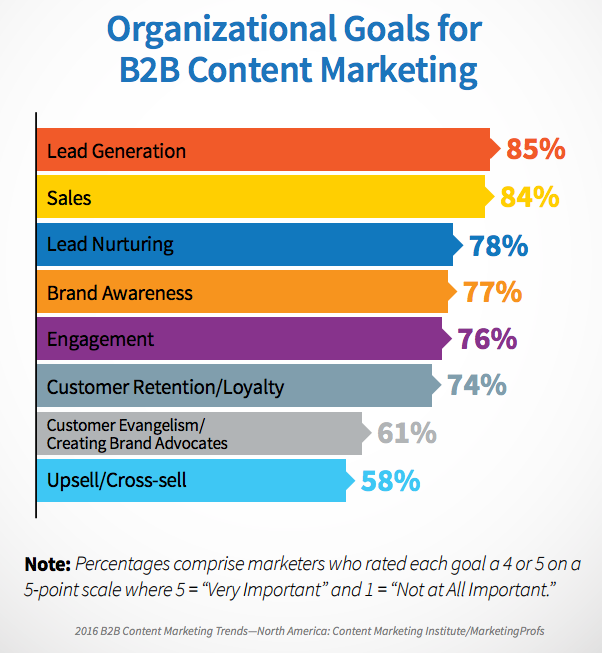
Nickie Bartels says that, “this shift in goals from brand awareness to lead generation is great news for marketers because the metrics for measuring lead-gen effectiveness are very objective. There’s no guesswork in tracking the ratio of qualified leads to leads generated, the number of sales won, and the number of visitors converted into contacts. The data is available if you know where and what to look for.”
The difficulty comes in attributing those qualified leads, sales, and conversions to specific pieces of content. (In fact, measuring content effectiveness challenged 57% of marketers this year.) But if you’ve built your content strategy using a three-part funnel of guest-contributed content to attract, blog content to educate, and gated content to convert, you’ll have more success in not only measuring effectiveness, but also in achieving your organizational goal.
7. User-Generated Content
Having users create content for you has become hugely popular over the past few years. This trend will continue to push forward into 2016 with social media being at its core.
Campbell Jof says that, “last year, User-Generated Content (UGC) was one of the hottest trends in the world of inbound marketing. The popularity was spurred by larger than life brands, but in no time at all, User-Generated Content developed into an essential component of the modern marketing machine across the board.”
Jof highlights this trend, by sharing Starbucks’ White Cup Contest that launched in April 2014. Starbucks fans were asked to create their own art on the chain’s white cups, click a picture of that and submit it to Starbucks’ Twitter or Instagram account using the hashtag #WhiteCupContest.
“Not only did this contest help Starbucks easily collect user-generated visual content for its social media pages, but it also helped the company drive traffic to its social media sites and its official website” continues Jof.
User-Generated Content will continue to make waves this 2016 and for a good reason. In fact, it is 20% more effective when it comes to facilitating buying decisions, according to a research paper released by Go.crowdtap.com.
In addition, 25% search results for world’s top 20 brands are links to user-generated content.
Jof recommends that you capitalize on your audience to create UGC! From product reviews to pictures taken by your fans, to social media comments, and comments on your blog, incorporate these user-generated pieces into your marketing stream to amplify engagement, brand awareness, and leverage social proof.
8. Episodic Content
When brands start out with content marketing, whether by blogging on an owned hub or by developing long-form assets for lead generation, most marketers still think in terms of campaigns. There’s a lot of upfront work done to create and launch an eBook or publish a blog, and once that piece of content has served its purpose, it’s on to the next big push.
But as brands begin to build a surplus of content and analyze the data coming in, clear patterns emerge and there are opportunities to expand upon ideas and themes. Sophisticated content marketers see these themes as trends to be explored in ongoing series, and in 2016 we’ll see more businesses partnering with great storytellers to focus on episodic content. That is, content broken out into chapters that progresses along a plotline with a beginning, middle, and end (Ted Karczewski).
“In 2016 we’ll see even more brands and media companies tell stories in stages (or chapters) as a way to build suspense, develop characters for Web audiences, and capitalize on momentum through social sharing” Ted continues.
9. Promotion-Driven Content
Rob Wormley says that, “in addition to developing high-quality content that actually helps people, it’s also important to develop promotion-driven content. This simply means strategically developing content that you can actually promote.”
Rob continues with the following recommendations:
You can do this by including quotes from influencers, mentioning people or tools, or making giant lists that include a lot of people. If you do these posts right, you should be able to email a handful of people within seconds of your post going live to let them know you included them.
For example, if you’re writing a guide on how to plan an employee holiday party, you can create a list of company culture experts and event planners.
Then, you can email each person on this list, and ask for some insights, which you include in your guide. When the guide is published, you can email those who shared their insights, and encourage them to share the guide with their audience.
“I think outreach is pretty crucial if you want your content to gain traction. By contacting companies/individuals that you mention in your articles, as well as industry blogs, you can really get a huge boost to your content’s exposure.” — Kane Miller, Founder at DoSocial
“B2B content and marketing teams need to work more closely with account management and sales in two areas: topic development and distribution. Client-facing teams are instant, untapped distribution channels that are currently underutilized. Practical tips: integrate content marketing with cold emails and lead nurturing campaigns, to build relationships at scale.” — Ritika Puri, Founder at Storyhackers
When creating content that’s promotion-driven, he recommends making it 80% educational, value-based content, and 20% promotion-driven. BUT it’s important that the promotion-driven content that makes up that 20% is still valuable and authentic. It can’t be overly promotional or disingenuous. It has to be real.
10. Content Will Become More Visual

Content is certainly King and has earned its place in the marketing hall of fame with over 93% of marketers using content marketing. Companies spend, on average, 25% of total marketing budgets on content marketing (Heidi Cohen). More than 8% of today’s consumers head to the Internet to do research on different products and companies.
Larisa Bedgood says that, “content will continue to reign as a key way to connect with consumers, but of course, consumers are looking for “More, Better, and Faster.” Social engines are already identifying and filtering out low quality content so content marketers will constantly need to write and create high-quality content to make an impact. Other forms of visual content will also become more pervasive. Consumers have less patience and want instant forms of communication. There will be a much higher demand for videos and other visual forms of content in 2016.”
According to Animoto, 73% of consumers are more likely to make a purchase after watching a video, 96% say online videos are helpful when making purchasing decisions, and 71% say watching online video content leaves them with a positive impression of the brand, service or company. Online video content is a marketing approach that promises a huge return on investment.
Conclusion
While content marketing has grown leaps and bounds over the past few years, it is 2016 where we will see more businesses using it for lead generation and user engagement.
Creating quality content remains a strong force that carries on from 2015, however with the moving trend towards promotion driven content that will directly impact the bottom line. Storytelling with character development, a series of episodes that have a beginning, middle and end will grow bringing with it a new kind of social media sharing. As well, the move towards long form content continues.
These are just some of the trends that we are seeing moving into the new year. If you have any predictions or have come across others that you think are significant please add them to the comments below.
-
Pierre Labuschagne
-
kudani

